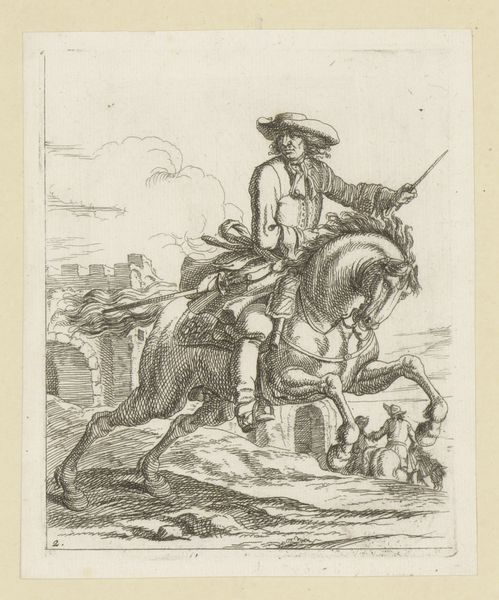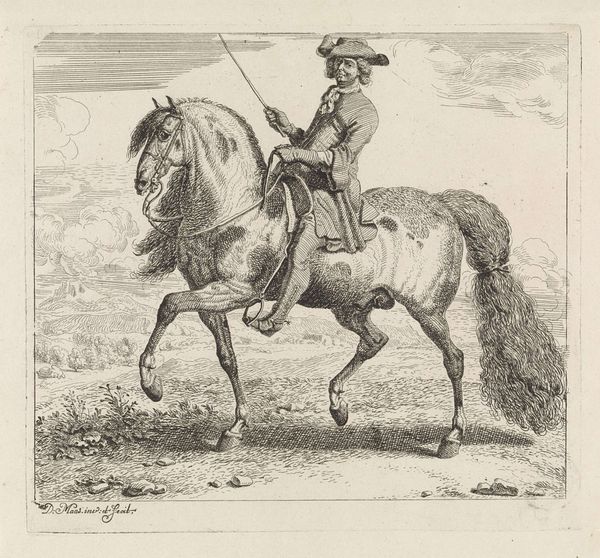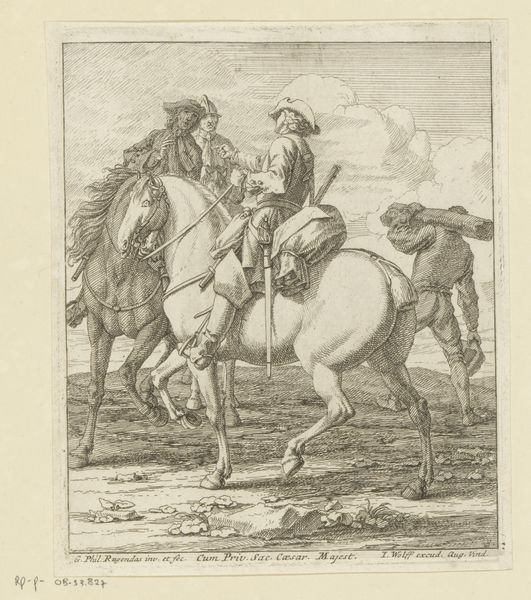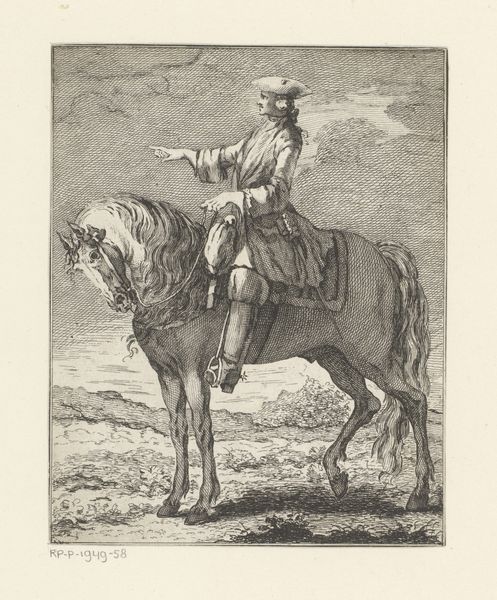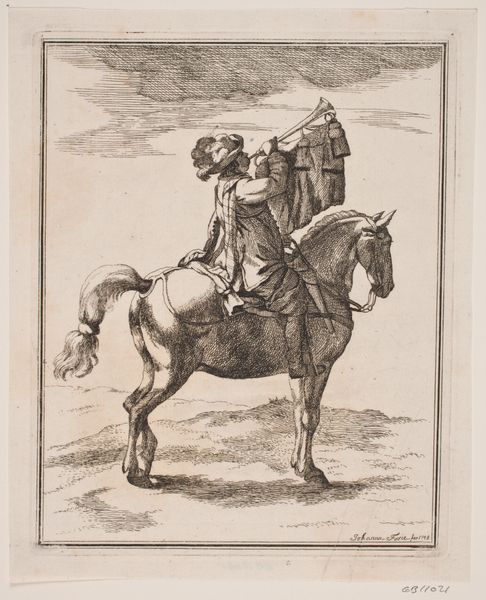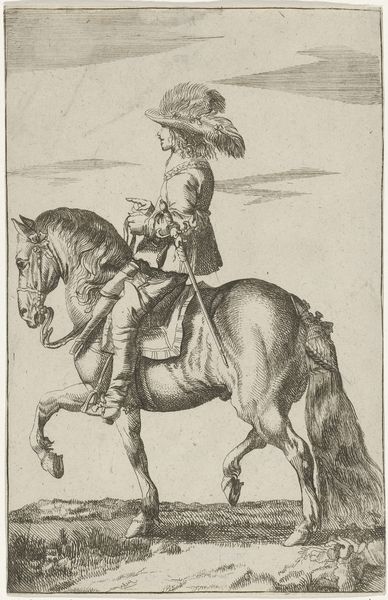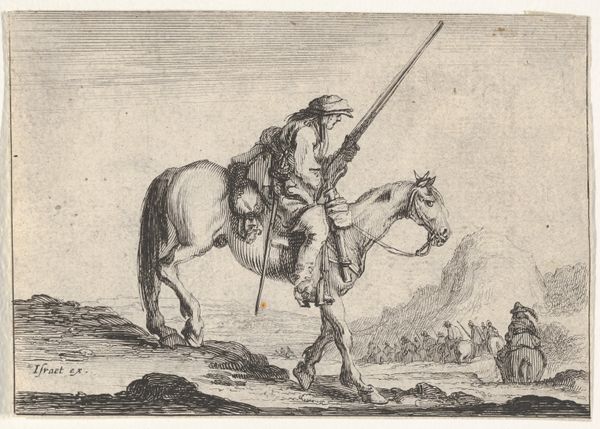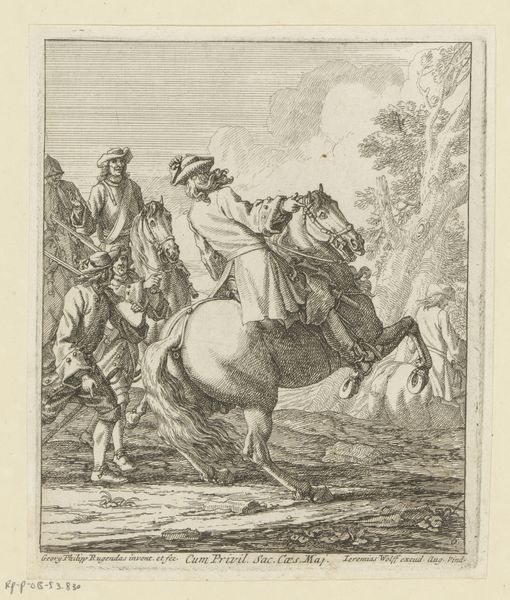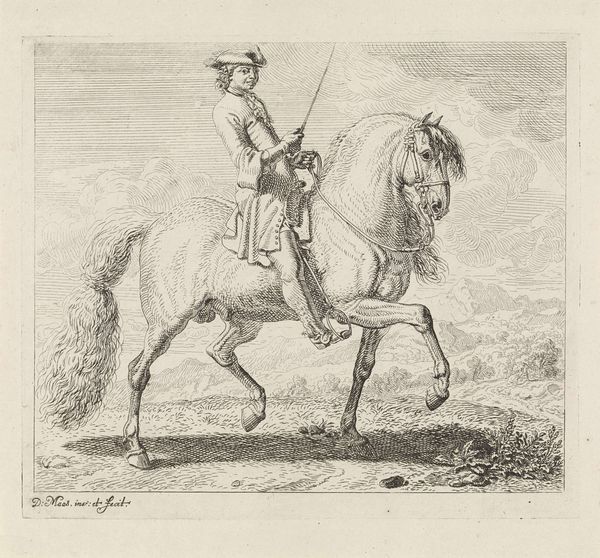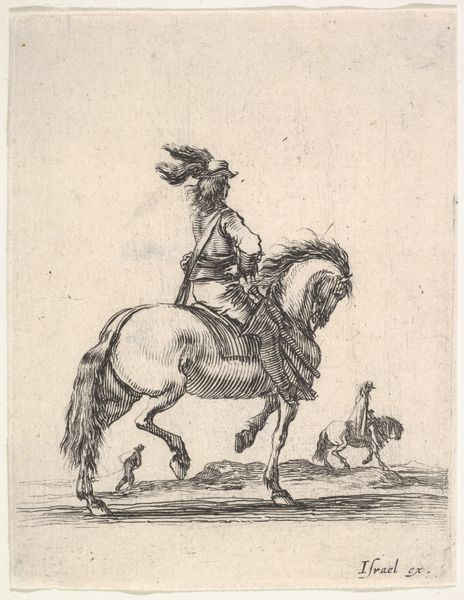
print, engraving
#
baroque
# print
#
landscape
#
figuration
#
history-painting
#
engraving
Dimensions: height 133 mm, width 107 mm
Copyright: Rijks Museum: Open Domain
Editor: Here we have Georg Philipp Rugendas’s “Ruiter op een steigerend paard,” an engraving likely made sometime between 1676 and 1742. I’m struck by the contrast between the very controlled lines of the engraving and the implied dynamism of the rearing horse. How do you read this piece? Curator: I see a window into the societal power structures of the period. The confident rider, perched high above, literally and figuratively dominates the landscape and the smaller figures in the background. This image reinforces a clear hierarchy. Have you considered how equestrian portraits often functioned as propaganda? Editor: Propaganda? I hadn't thought of it that way. More like celebrations of individual prowess. Curator: It's both, isn't it? The celebration of the individual is inherently tied to the justification of their power. Think about the costuming, the confident posture, the symbolic control over the animal. What does that suggest about the intended audience and their expectations? Who are these symbols really meant to impress? Editor: So it's less about skill, and more about reinforcing a certain image of authority? I guess the deliberate nature of the engraving, the clear lines you pointed out, contribute to that sense of constructed power. Curator: Exactly! It’s carefully crafted, visually articulating social expectations for those in power. But, how might we deconstruct this idealized representation? How might a contemporary audience critique its implications? Editor: I never thought an image of a horse could reveal so much about social hierarchy. I'm seeing it with completely new eyes now! Curator: And that's the point – to look beyond the surface and consider the underlying narratives that these images convey, and how they contribute to larger conversations about power, identity, and representation, then and now.
Comments
No comments
Be the first to comment and join the conversation on the ultimate creative platform.
